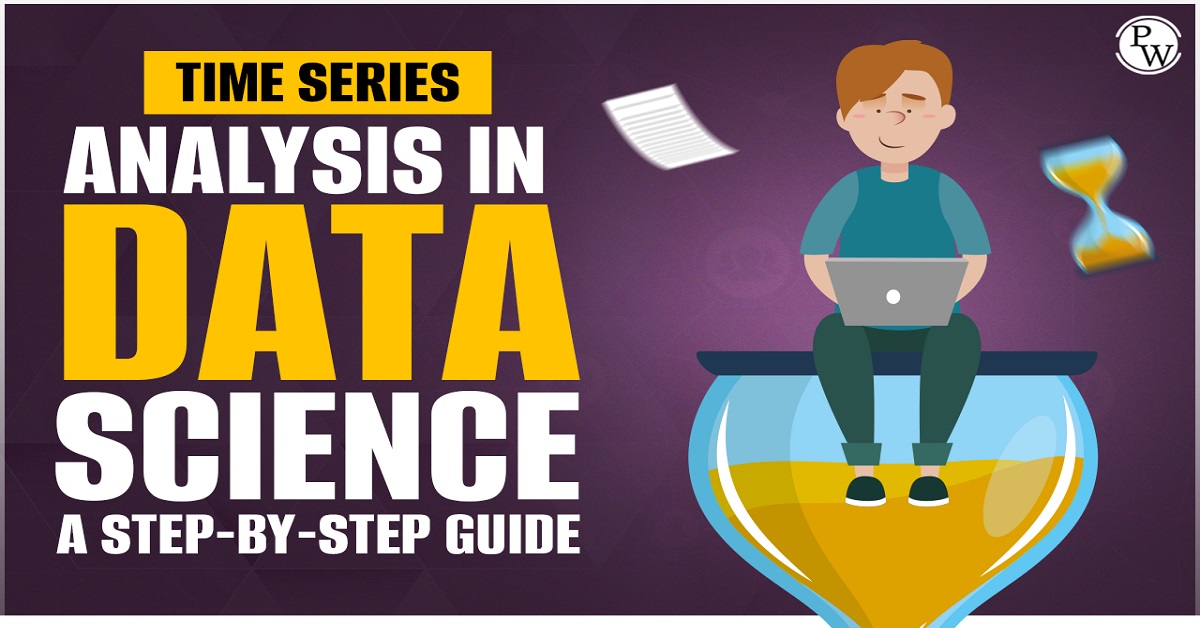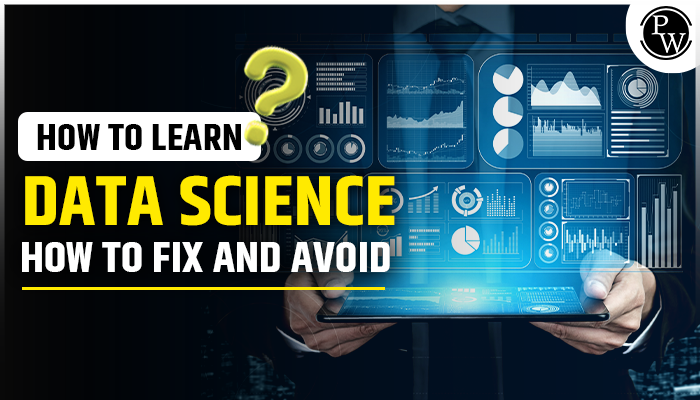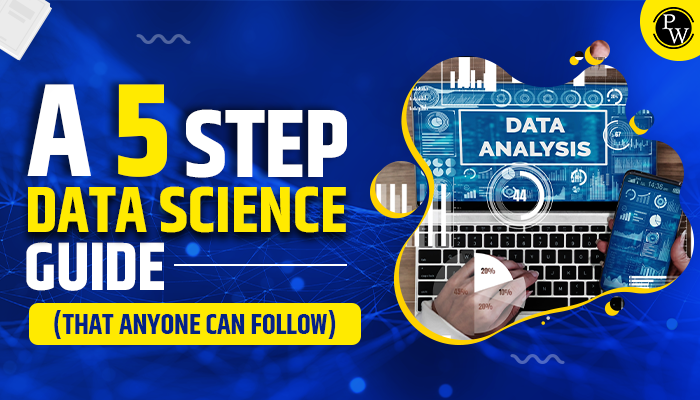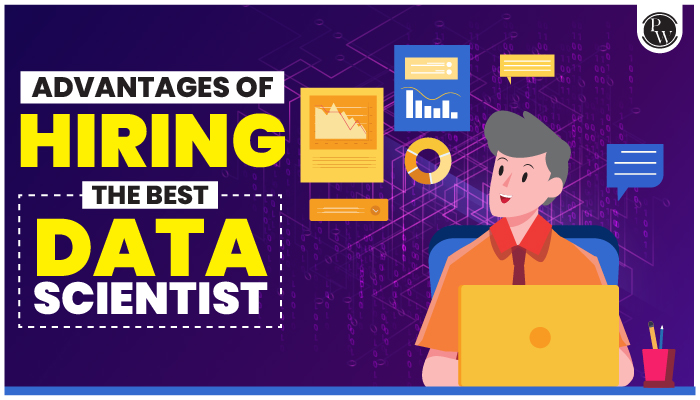Time Series Analysis in Data Science (TSA) stands at the forefront of data science methodologies, offering a systematic approach to unraveling patterns and trends within sequential data points.
Time Series Analysis in Data Science: Time Series Analysis is a powerful lens to decipher temporal intricacies, offering insights that drive informed decision-making. Whether forecasting financial trends, predicting climate patterns, or understanding user behavior, mastering the step-by-step guide to time series analysis equips practitioners with a valuable skill set in the dynamic realm of data science. This comprehensive guide aims to provide a step-by-step exploration of Time Series Analysis, empowering data scientists, analysts, and enthusiasts to delve into the temporal intricacies of their datasets.
Time Series Analysis in Data Science Overview

Time Series Analysis in Data Science is crucial for examining and understanding patterns within sequential data points collected over time. Unlike traditional data analysis, where observations are independent, time series analysis focuses on the temporal aspect, allowing analysts to uncover trends, seasonality, and fluctuations in the data.
One defining characteristic of time series data is its dependence on time, and the analysis involves exploring how variables evolve over a specific time frame. This temporal dependency introduces a set order of relationships between data points, providing valuable insights into the dynamics of the underlying processes.
A fundamental consideration in time series analysis is categorizing data into two main types: stationary and non-stationary. Stationary time series data adheres to specific rules, such as a constant mean and variance, making it easier to model and predict. On the other hand, non-stationary data exhibits changes in mean or variance over time, posing additional challenges in analysis. Key models and methods commonly used in time series analysis include the Box-Jenkins ARIMA models employed for univariate analysis and forecasting. Multivariate models extend the analysis to multiple time-dependent variables, allowing a more comprehensive understanding of interrelated data.
Deep learning approaches, such as Long Short-Term Memory (LSTM) Networks, are practical for capturing long-term dependencies in sequential data, especially when dealing with complex, non-linear patterns. Seasonal-trend decomposition using LOESS (STL) provides a non-parametric approach to decomposing time series into its constituent components. Machine learning models like Random Forests and XGBoost can be applied to multivariate time series data, leveraging ensemble learning for accurate predictions based on various features.
Time Series Analysis is pivotal in extracting meaningful insights, making predictions, and aiding decision-making processes in numerous domains, including finance, healthcare, and environmental science. The ability to unravel temporal patterns contributes significantly to understanding the dynamics of real-world phenomena, enabling data scientists to make informed predictions and optimize strategies based on historical trends.
What is Time Series Analysis in Data Science?
Time series analysis is a specialized method for examining a sequence of data points gathered over a specific time span. Unlike sporadic or random data point collection, time series analysis involves consistently recording data regularly throughout a defined timeframe. However, this analysis goes beyond the mere accumulation of data over time.
What distinguishes time series data is its ability to reveal the evolution of variables over time. Time is crucial, illustrating how data adapts across various data points and culminates in outcomes. This approach adds an extra layer of insight, introducing a structured order of dependencies among the data. Data points are typically required for practical time series analysis to ensure accuracy and reliability. A comprehensive dataset provides a representative sample size, allowing the analysis to sift through potentially noisy data. It also guarantees that identified trends or patterns are not outliers and can account for seasonal variations. Moreover, time series data holds the potential for forecasting, enabling predictions of future data based on historical patterns and trends.
Also Read: Analysis of Algorithm in Data Structure
Components of Time Series Analysis in Data Science
The below table shows the components of time series analysis in data science:
| Components of Time Series Analysis in Data Science | |
| Component | Description |
| Trend | This pertains to a continuous timeline within the dataset where there is no fixed interval, and any divergence within the given dataset forms a continuous trend. The trend can be Negative, Positive, or exhibit Null Trend. |
| Seasonality | In this context, there are regular or fixed interval shifts within the dataset along a continuous timeline. These shifts often manifest in patterns resembling a bell curve or a sawtooth. |
| Cyclical | Cyclical patterns lack fixed intervals, and there is uncertainty in the movement and pattern within the dataset. The cyclical nature implies a recurring but not necessarily regular occurrence. |
| Irregularity | Irregularity encompasses unexpected situations, events, or scenarios, leading to spikes within a short time span in the dataset. These irregularities introduce unpredictability and variability in the data. |
| Time Series Data | Sequentially ordered data points collected over a period of time. This forms the foundation for analysis. |
| Trend Analysis | Identifying and understanding the long-term movement or direction in the data, indicating upward or downward trends. |
| Seasonal Patterns | Recognizing repetitive patterns or variations that occur at regular intervals, often linked to seasons or cycles. |
| Cycle Analysis | Examining recurring patterns or fluctuations that are not strictly tied to seasonal factors, occurring over longer periods. |
| Noise/Residual Analysis | Identifying irregular or random fluctuations that may obscure the underlying patterns, allowing for cleaner analysis. |
| Autocorrelation | Assessing the correlation between a variable’s current value and its past values, indicating temporal dependencies. |
| Forecasting Models | Utilizing various models (e.g., ARIMA, Exponential Smoothing) to predict future values based on historical patterns. |
| Anomaly Detection | Detecting unusual or unexpected events or data points that deviate significantly from the established patterns. |
| Machine Learning Models | Integrating machine learning techniques, such as recurrent neural networks (RNNs) or long short-term memory networks (LSTMs), for advanced analysis. |
Time Series Analysis in Data Science Example
Here are a few examples of Time Series Analysis example in Data Science:
Stock Price Prediction:
- Objective: Forecast future stock prices based on historical price data.
- Methodology: Use time series analysis techniques to identify stock price trends, patterns, and seasonality. Implement time series forecasting models such as ARIMA or machine learning algorithms to predict future price movements.
Energy Consumption Forecasting:
- Objective: Predict future energy consumption patterns for efficient resource planning.
- Methodology: Analyze historical energy consumption data to identify daily, weekly, or seasonal patterns. Apply time series forecasting models to predict future energy demand, aiding optimal resource allocation and infrastructure planning.
Website Traffic Prediction:
- Objective: Forecast website traffic to optimize server resources.
- Methodology: Utilize time series analysis to examine historical website traffic patterns, including daily and weekly fluctuations. Implement forecasting models to predict future traffic volumes, ensuring server resources can handle expected loads.
Sales Demand Forecasting:
- Objective: Predict future sales demand to optimize inventory management.
- Methodology: Analyze historical sales data to identify trends, seasonal variations, and external factors influencing demand. Apply time series forecasting models to predict future sales, enabling businesses to maintain optimal inventory levels.
Temperature Forecasting:
- Objective: Predict future temperatures for weather forecasting.
- Methodology: Analyze historical temperature data to identify seasonal trends and patterns. Use time series forecasting models to predict future temperatures, aiding meteorologists in providing accurate weather forecasts.
Financial Market Analysis:
- Objective: Analyze financial time series data for investment decisions.
- Methodology: Apply time series analysis to historical financial data to identify market trends, volatility, and potential opportunities. Implement forecasting models to predict future market movements, supporting investment strategies.
Healthcare Patient Admission Prediction:
- Objective: Forecast patient admission rates to optimize hospital resource allocation.
- Methodology: Analyze historical patient admission data to identify patterns based on time, day, or season. Use time series forecasting to predict future admission rates, helping hospitals allocate resources efficiently.
Traffic Flow Prediction:
- Objective: Predict traffic flow for urban planning and congestion management.
- Methodology: Analyze historical traffic data to identify daily, weekly, or event-related patterns. Apply time series forecasting models to predict future traffic conditions, aiding traffic management and infrastructure planning.
The Full Stack Data Science Pro course by PW syllabus goes beyond traditional boundaries, ensuring learners cultivate a full spectrum of skills to tackle modern data challenges. The program emphasizes practical, hands-on learning, allowing participants to apply theoretical knowledge to real-world scenarios. By the end of the syllabus, learners will be well-equipped to contribute meaningfully to data-driven results across various domains. Embark on your data science journey with Full Stack Data Science Pro by Physics Wallah and gain the skills needed to thrive in the dynamic world of data science.
Significance of Time Series Analysis in Data Science
Time series analysis is crucial in data science, offering unique insights and valuable applications across various domains. Here are some critical significances of time series analysis in data science:
Pattern Recognition:
Time series analysis helps identify patterns and trends within sequential data. Understanding these patterns is essential for making informed decisions, predicting future trends, and uncovering hidden insights.
Forecasting:
One of the primary applications of time series analysis is forecasting. Data scientists can make predictions about future values by analyzing historical data patterns. This is valuable in financial markets, sales forecasting, demand planning, and resource management.
Anomaly Detection:
Time series analysis effectively detects anomalies or unusual events within a dataset. Sudden spikes, drops, or unexpected patterns can indicate issues that require attention, such as fraud detection in financial transactions or monitoring equipment for malfunctions.
Resource Optimization:
Businesses can use time series analysis to optimize resource allocation. Organizations can efficiently allocate resources, plan inventory, and manage supply chains by understanding historical usage patterns.
Decision Support:
Time series data provides a basis for informed decision-making. Whether optimizing marketing campaigns, managing energy consumption, or planning staffing levels, analyzing trends over time helps make strategic decisions.
Financial Analysis:
Time series analysis is fundamental in finance for evaluating stock prices, currency fluctuations, and other financial indicators. Traders and analysts use this analysis to make investment decisions based on historical market behavior.
Healthcare Applications:
Time series analysis is valuable in healthcare for monitoring patient data over time. It aids in predicting disease outbreaks, analyzing patient vital signs, and optimizing healthcare resource allocation.
Climate and Environmental Studies:
Environmental scientists use time series analysis to study climate patterns, weather changes, and environmental fluctuations. This information is vital for understanding long-term trends and predicting climate change.
Quality Control:
Time series analysis can be applied in manufacturing and production to monitor and control product quality. Analyzing data over time helps identify deviations and maintain consistent quality standards.
Machine Learning Model Inputs:
Time series data serves as a critical input for various machine learning models. Models like recurrent neural networks (RNNs) and long short-term memory networks (LSTMs) are designed to handle sequential data and are widely used in time series analysis.
Time series analysis is a powerful tool in the data scientist’s toolkit, providing insights, predictions, and decision support across diverse industries and applications.
Also Check: Choosing the Right Business Intelligence Software
Time Series Analysis in Data Science Types
Here are the types of Time Series Analysis in Data Science:
| Time Series Analysis in Data Science Types | |
| Type | Description |
| Descriptive Analysis | Understands basic characteristics using statistical measures, visualizations, and summary statistics to describe central tendency, dispersion, and shape of the data. |
| Exploratory Data Analysis | Discovers patterns, trends, and anomalies through visualizations like line charts, histograms, and autocorrelation plots, identifying underlying patterns and seasonality. |
| Trend Analysis | Identifies and analyzes long-term trends by applying mathematical techniques such as moving averages or polynomial regression to smooth out short-term fluctuations. |
| Seasonal Analysis | Detects and analyzes repeating patterns or seasonal variations by decomposing the time series into trend, seasonality, and residual components. |
| Autocorrelation and Partial Autocorrelation Analysis | Identifies dependencies and relationships between past and future observations using autocorrelation and partial autocorrelation functions. |
| Stationarity Analysis | Assesses the stationarity of the time series data by checking for trends and variations to determine if statistical properties remain constant over time. |
| Forecasting Models | Predicts future values based on historical data using models like Autoregressive Integrated Moving Average (ARIMA), Exponential Smoothing State Space Models (ETS), or machine learning algorithms. |
| Anomaly Detection | Identifies unusual events using statistical methods or machine learning algorithms to detect deviations from expected patterns, indicating anomalies. |
| Event Analysis | Analyzes the impact of specific events on the time series by examining data around significant events to understand their effects on trends and patterns. |
| Cross-Correlation Analysis | Measures the correlation between two or more time series to evaluate how changes in one correlate with changes in another, helping identify relationships and dependencies. |
Time Series Analysis in Data Science Models and Techniques
Various methods cater to data types and modeling requirements in the vast landscape of time series analysis. Among them, three prominent approaches stand out:
1) Box-Jenkins ARIMA Models:
- Type: Univariate models
- Application: Applied to a single time-dependent variable (e.g., temperature over time) to comprehend its behavior and forecast future data points.
- Assumption: Assumes the data is stationary. Analysts need to address and eliminate differences and seasonalities in historical data points. The ARIMA model incorporates terms for moving averages, seasonal difference operators, and autoregressive terms.
2) Box-Jenkins Multivariate Models:
- Type: Multivariate models
- Application: Employed to analyze more than one time-dependent variable concurrently (e.g., temperature and humidity over time).
3) Holt-Winters Method:
- Type: Exponential smoothing technique
- Application: Designed for predictive modeling, especially effective when data points exhibit seasonality.
4) Autoregressive Integrated Moving Average (ARIMA):
- Model Type: Univariate
- Objective: Analyze and predict a single time-dependent variable.
- Assumptions:
- Data is stationary.
- Seasonal patterns and differences are considered.
- Key Components:
- Autoregressive (AR): Past values influence future values.
- Integrated (I): Differencing to achieve stationarity.
- Moving Average (MA): Past forecast errors affect future values.
5) Exponential Smoothing State Space Models (ETS):
- Model Type: Univariate
- Objective: Forecast time series data.
- Assumptions:
- Similar to ARIMA but simpler.
- Accounts for error, trend, and seasonality components.
- Key Components:
- Error (E): Represents the residuals.
- Trend (T): Captures the underlying trend.
- Seasonality (S): Incorporates periodic patterns.
6) Prophet:
- Model Type: Univariate or Multivariate
- Objective: Handle time series data with daily observations and seasonality.
- Features:
- Developed by Facebook for forecasting with additional components.
- Accommodates holidays and special events.
- Robust to missing data and outliers.
7) Long Short-Term Memory (LSTM) Networks:
- Model Type: Neural Network (Deep Learning)
- Objective: Capture long-term dependencies in time series data.
- Features:
- Suitable for sequence prediction.
- Maintains memory over long sequences.
- Effective for complex, non-linear patterns.
8) Seasonal-Trend decomposition using LOESS (STL):
- Model Type: Decomposition
- Objective: Decompose time series into seasonal, trend, and residual components.
- Features:
- Non-parametric approach.
- Robust to various data patterns.
- Effective for understanding complex structures.
9) Machine Learning Models (Random Forests, XGBoost, etc.):
- Model Type: Multivariate
- Objective: Predict time series outcomes based on various features.
- Features:
- Utilizes ensemble learning for improved accuracy.
- Suitable for datasets with multiple variables.
Each method has unique strengths and is suited to different scenarios, providing analysts with a toolkit to delve into diverse aspects of time series data. Whether focused on single or multiple variables, these methods contribute to a comprehensive understanding of temporal trends and aid in making informed predictions. You can also download Time series analysis in data science PDF to get access at one shot!
Methods To Check Time Series Analysis in Data Science
In time series analysis, data can be categorized into two main types: stationary and non-stationary. Understanding these types is crucial for meaningful analysis, and their characteristics are outlined below:
Stationary:
A dataset is considered stationary if it adheres to specific rules, exhibiting no discernible trend, seasonality, cyclical patterns, or irregularities throughout the time series.
- The mean value remains consistently constant during the entire data analysis.
- The variance demonstrates constancy concerning the time frame.
- Covariance, which measures the relationship between two variables, remains unchanged.
Non-Stationary:
Conversely, a dataset is labeled non-stationary if the mean-variance or covariance changes over time.
Methods to Check Stationarity
During the time series analysis (TSA) model preparation workflow, assessing whether the dataset is stationary is imperative. This is achieved through statistical tests, with two prominent ones available:
Augmented Dickey-Fuller (ADF) Test:
- Assumptions:
- Null Hypothesis (H0): Series is non-stationary.
- Alternate Hypothesis (HA): The series is stationary.
- Interpretation:
- P-value> 0.05: Fail to reject (H0).
- p-value <= 0.05: Accept (H1).
Kwiatkowski–Phillips–Schmidt–Shin (KPSS) Test:
- This test evaluates a NULL Hypothesis (HO) that perceives the time series as stationary around a deterministic trend against the alternative of a unit root.
- Since TSA requires stationary data for further analysis, ensuring the dataset’s stationarity is crucial.
These statistical tests are pivotal in determining whether a time series dataset is stationary or non-stationary, laying the foundation for accurate and insightful time series analysis.
Time Series Analysis in Data Science and Machine Learning
Various model options are available when engaging in Time Series Analysis (TSA) in Data Science and Machine Learning. Among them are the autoregressive–average (ARMA) models, denoted by [p, d, and q].
- P: Autoregressive lags
- Q: Moving average lags
- D: Difference in the order
Before delving into ARIMA, it’s essential to comprehend the following terms:
Partial Auto-Correlation Function (PACF):
PACF, akin to the Auto-Correlation Function, presents a nuanced challenge in comprehension. It illustrates the correlation of the sequence with itself, considering a certain number of time units per sequence order. PACF exclusively reveals the direct effect while eliminating all other intermediary effects from the given time series.
Auto-Correlation Function (ACF):
ACF gauges the similarity between a value in a given time series and its preceding value. In other words, it quantifies the extent of similarity between a specific time series and its lagged version at various observed intervals. The Python Statsmodels library is adept at calculating autocorrelation, identifying trends in the dataset, and the influence of past observed values on the current ones.
Decode Data Science With Machine Learning 1.0 by Physics Wallah is the best course to learn all Data science concepts. Designed for those interested in delving into the intricacies of machine learning, this course serves as a gateway to harnessing the power of Python for creating intelligent and impactful applications.
Whether you are a beginner looking to establish a strong foundation or an enthusiast eager to explore the cutting-edge field of machine learning, this program caters to diverse learning needs. Whether you aspire to pursue a career in data science machine learning or want to explore the possibilities of Python in intelligent applications, Decode Data Science with Machine Learning 1.0 offers a comprehensive and accessible pathway to achieve your goals.
Must Read: Free Data Science Courses: A Certificate Guide for 2024
FAQs
What is Time Series Analysis?
Time Series Analysis is a method of analyzing and interpreting data points collected over sequential time intervals. It involves studying the data's patterns, trends, and behaviors to make predictions or gain insights.
Why is Time Series Analysis important in Data Science?
Time Series Analysis is crucial in Data Science because it identifies temporal patterns, trends, and dependencies in data. It helps forecast future values, understand historical behaviors, and make informed decisions.
What are some standard components of Time Series Analysis?
Common components include trend analysis, seasonal patterns, cycle analysis, noise/residual analysis, autocorrelation, forecasting models, anomaly detection, and the integration of machine learning models.
How is Time Series Data different from other types of data?
Time Series Data consists of data points ordered chronologically, providing insights into how variables change over time. The temporal aspect is crucial for understanding dependencies and predicting future values.
What is the role of Trend Analysis in Time Series?
Trend Analysis helps identify long-term movements or directions in the data, indicating whether variables are generally increasing, decreasing, or stable over time.
How does Time Series Analysis contribute to forecasting?
Time Series Analysis employs forecasting models to predict future values based on historical patterns, allowing organizations to plan and make decisions with foresight.
What challenges may arise in Time Series Analysis?
Challenges include handling noise in the data, accounting for seasonality, addressing outliers, and choosing appropriate forecasting models based on the characteristics of the time series.
Can Machine Learning be applied to Time Series Analysis?
Yes, machine learning techniques, such as recurrent neural networks (RNNs) and extended short-term memory networks (LSTMs), can enhance Time Series Analysis by capturing complex dependencies in data.
How does Autocorrelation impact Time Series Analysis?
Autocorrelation measures the correlation between a variable's current and past values. Understanding autocorrelation helps assess temporal dependencies within the time series.
What is the significance of Anomaly Detection in Time Series Analysis?
Anomaly Detection identifies unusual or unexpected events or data points, allowing organizations to detect and address abnormalities that deviate from established patterns.





